In the summer of 2015, a second year studio at the Waterloo School of Architecture investigated, through design and discussion, the relationship of building, landscape and urban networks. The studio aimed to design for Toronto’s various ecologies; inhabitation, mobility, natural systems, infrastructures and cultural and social structures. The site of study was the Don Valley, a ravine in Toronto that forms part of the Don River watershed. This series is a collection of selected projects from the studio.
Proposal by Amir Ghazanfari | Studio Coordinator : Lola Sheppard
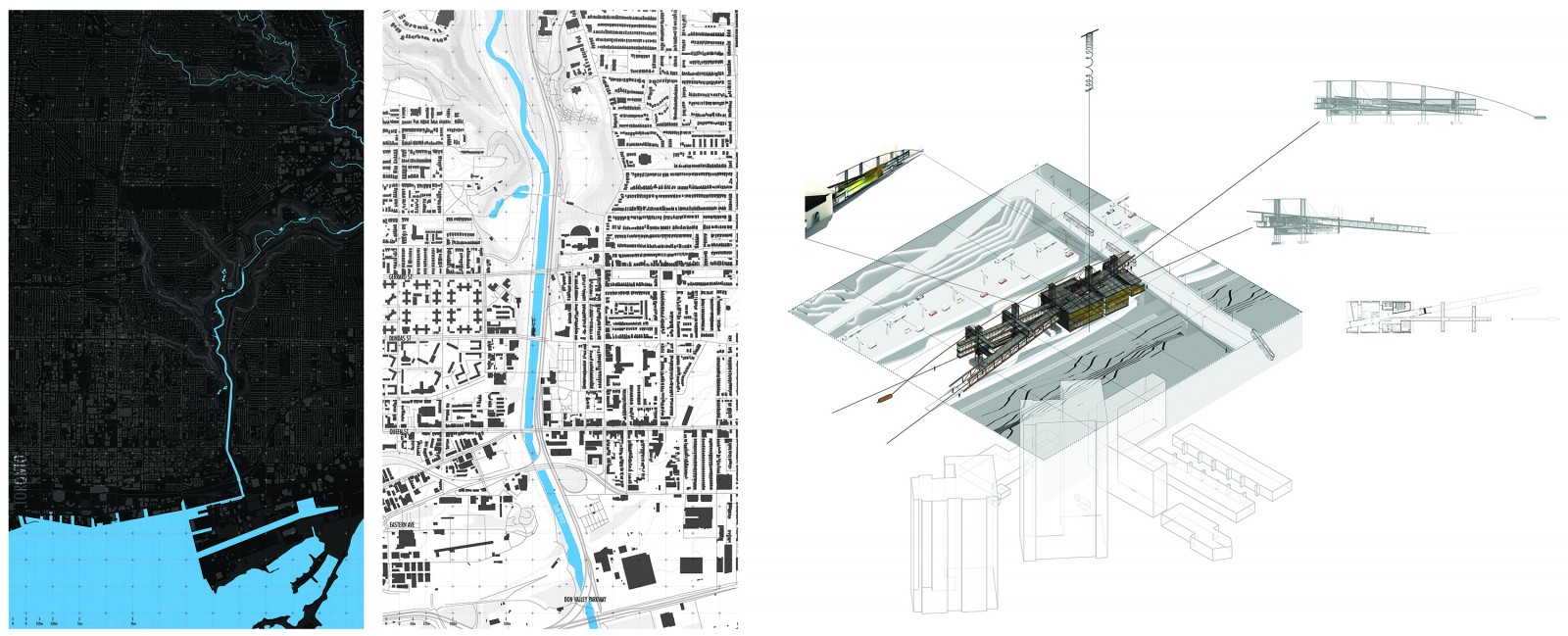
SITE PLAN – SITE AXONOMETRIC
Frankenstein
Paradox on the Don; the conflicting nature of the river Don, gave birth to the logic of the building. Two different programs, water treatment and education are combined inside the building in order to create a center for experiential use of plants in water treatment. The paradoxical nature of the building arose from the parti model, where through the separation of positive and negative two different programs were combined. Flow between the opposite programs is achieved from the overlapping flow through the spaces.
Placed in the river Don, the architecture combines two different programs which do not belong to the same category. By doing so a new condition is created where the two programs compliment one another and a new program is juxtaposed. By combining water treatment and education a new center for experiential use of plants in water remediation is created.
At the macro scale, the iconic status of the building connects it to the larger context of Toronto. By providing amenities, such as a library, the core of the building is connected to the core of the downtown. By allowing access, the building opens itself to the public realm. Strategically placed at the dense residential area of Dundas, the building capitalizes on the already existing infrastructure. Lastly it also acts as a link to the walking trails along the Don.
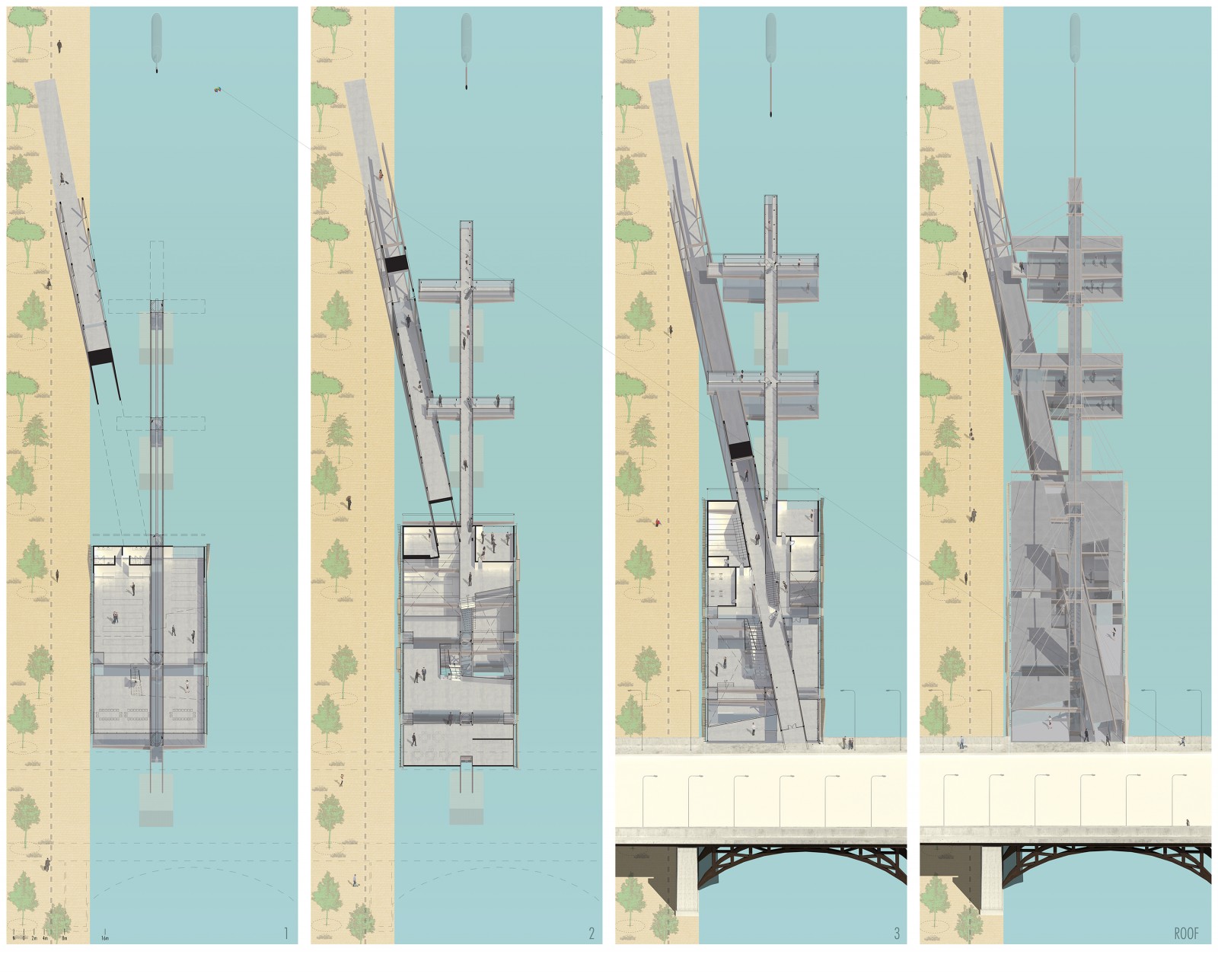
FLOOR PLANS
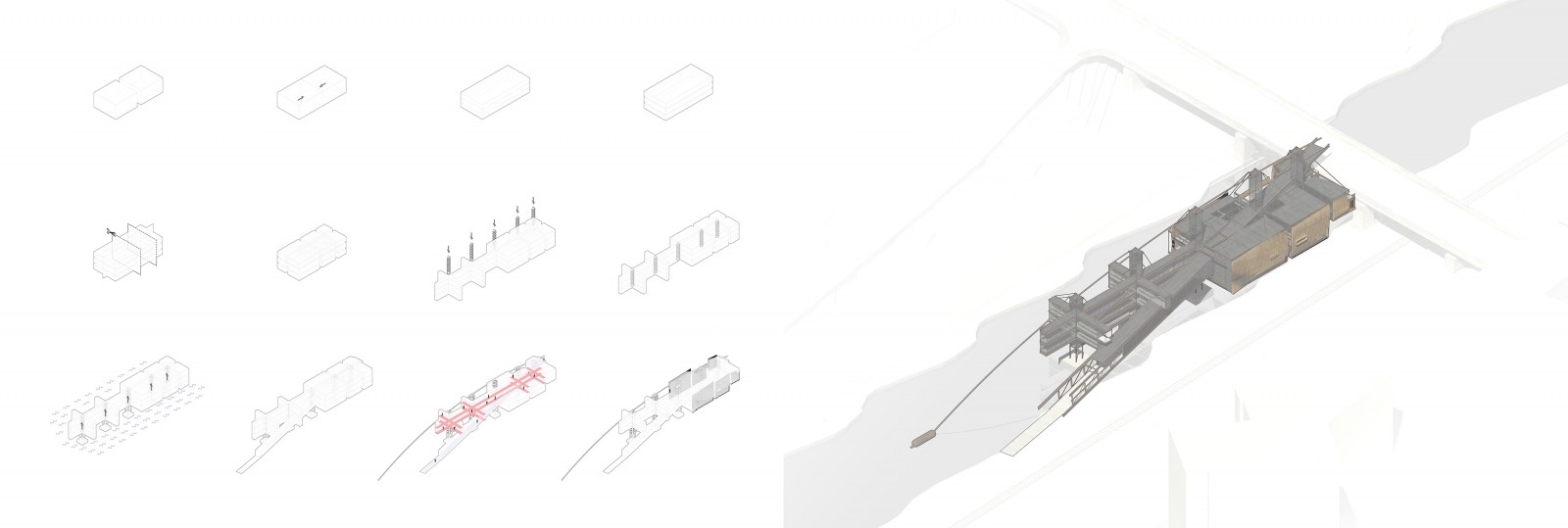
PARTI DIAGRAM
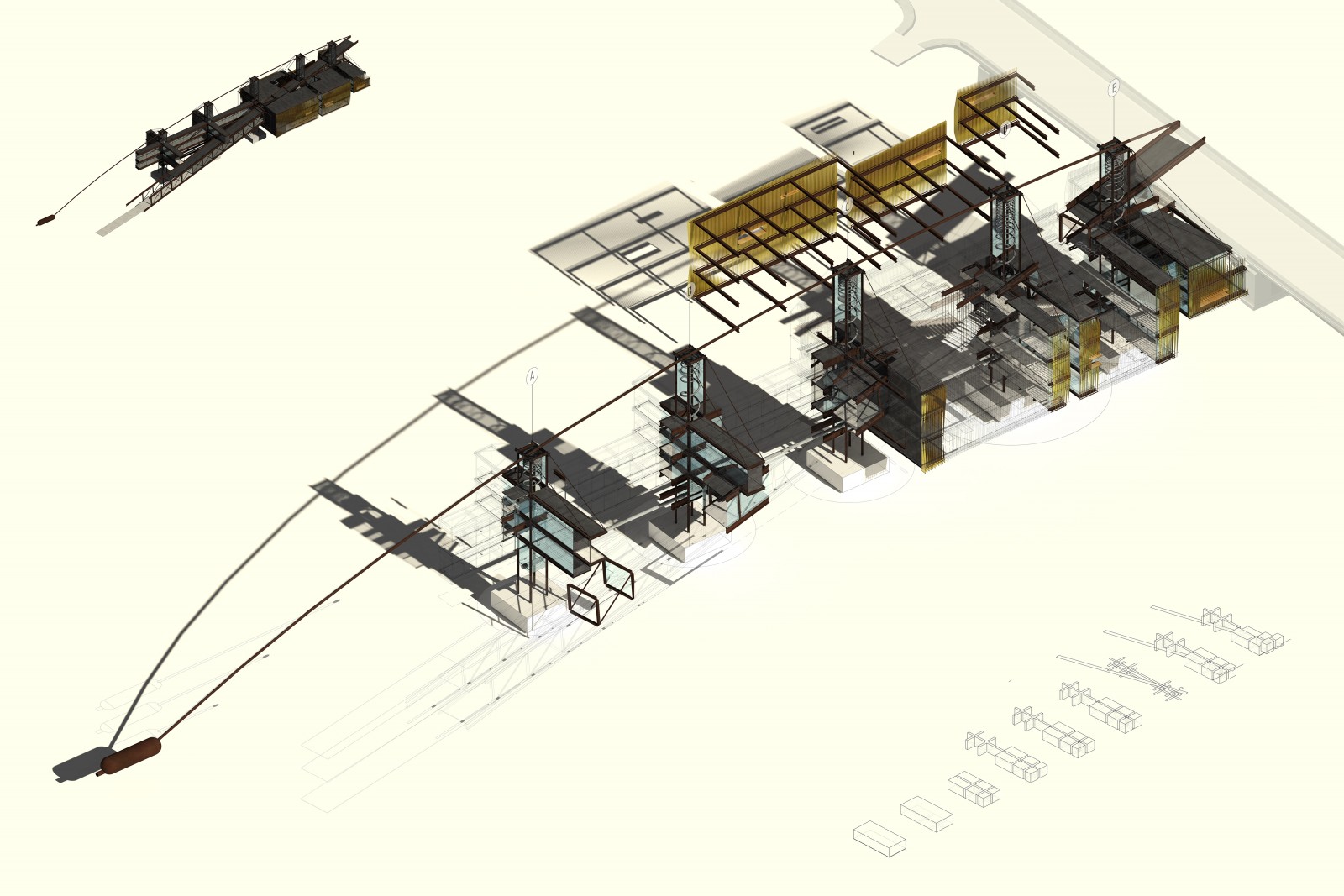
MOMENTS DIAGRAM
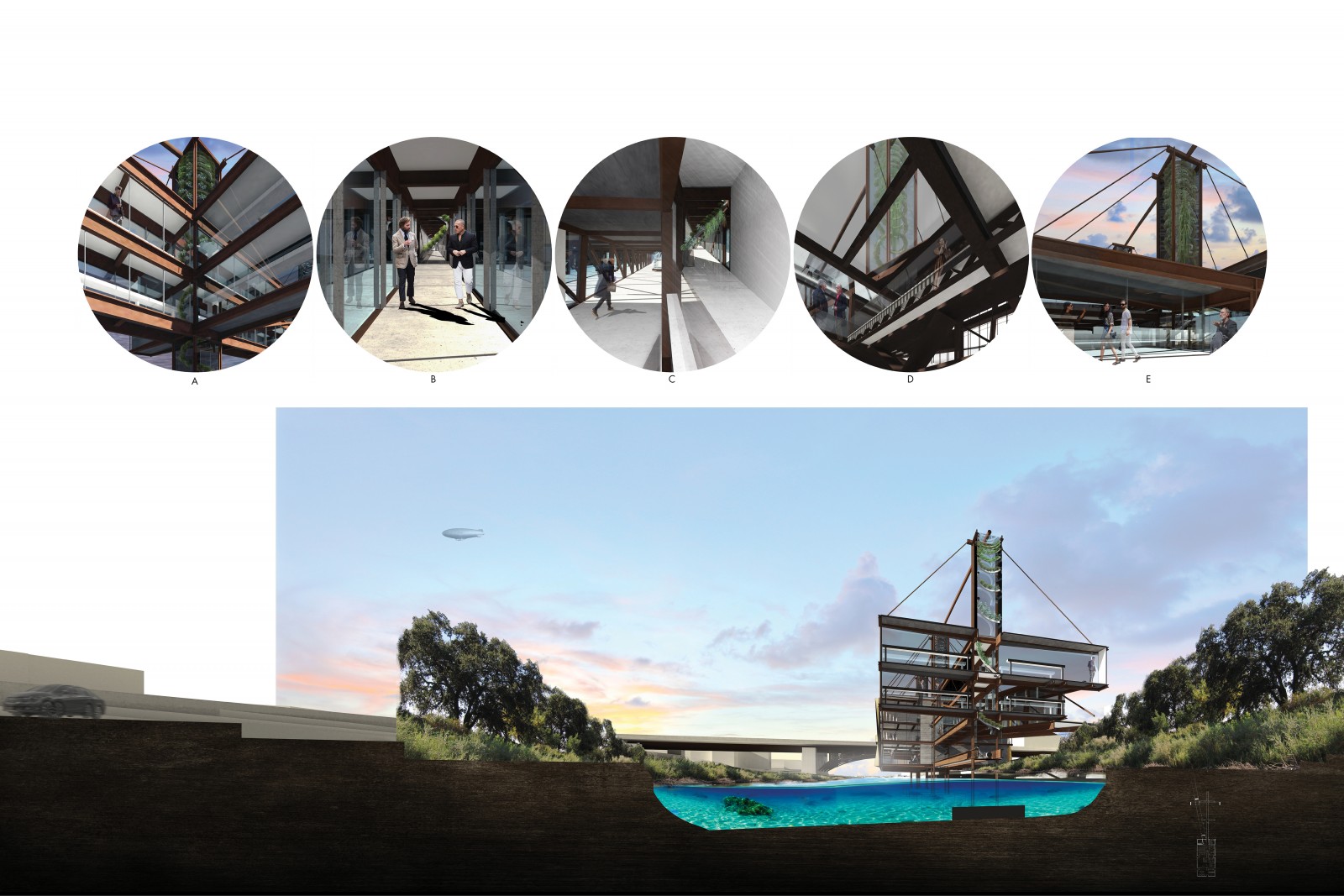
MOMENTS – SECTIONAL PERSPECTIVE
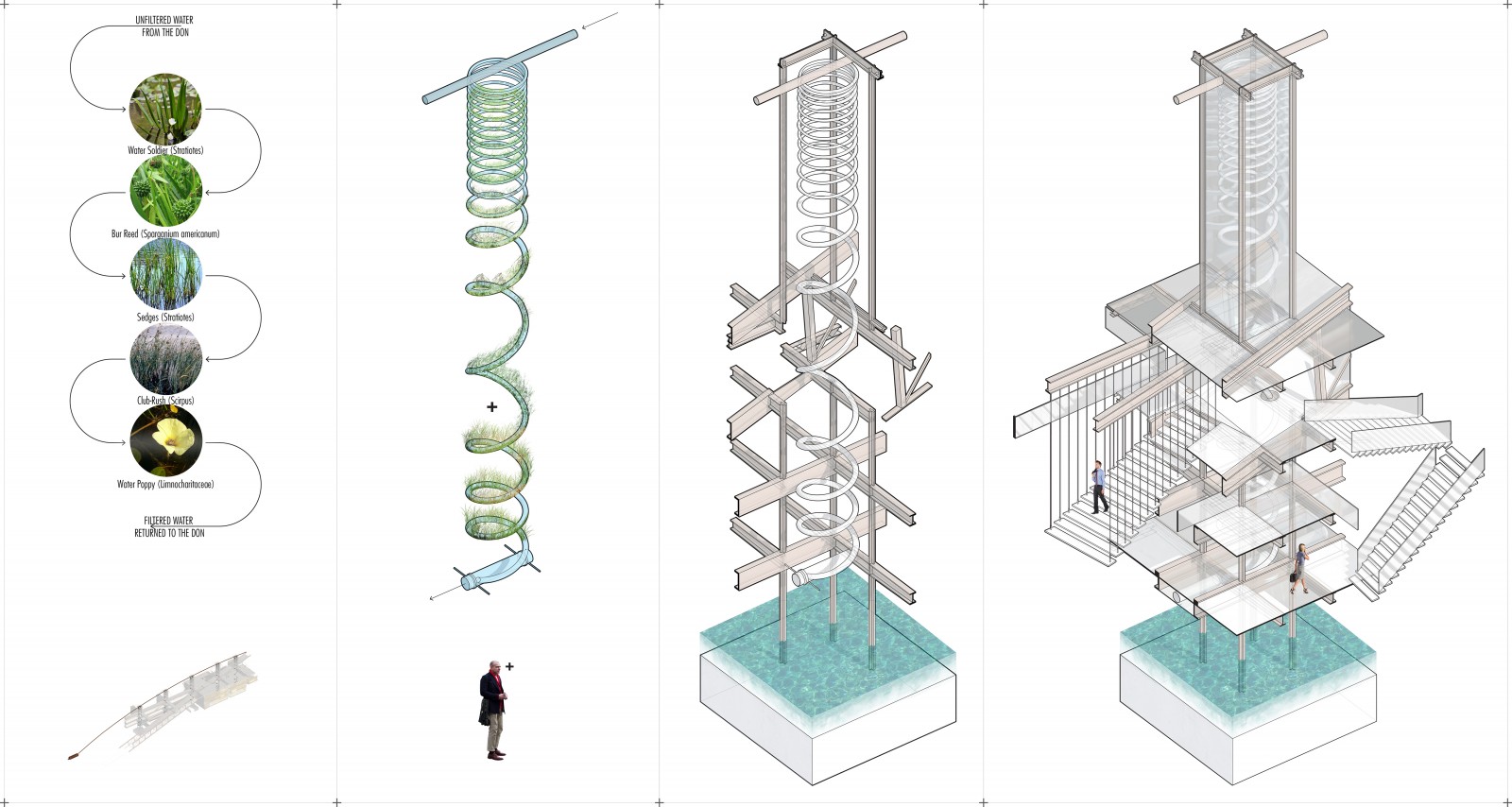
WATER FILTRATION DIAGRAM
Sneha Sumanth is a graduate student at the University of Waterloo School of Architecture. Her role in BRIDGE involves overseeing the website and publications. Her thesis work looks at the relationship of energy and architecture in the offshore infrastructure of the Santa Barbara Channel in California.


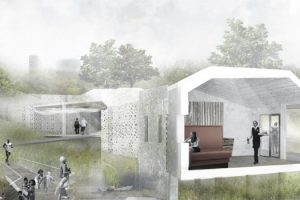
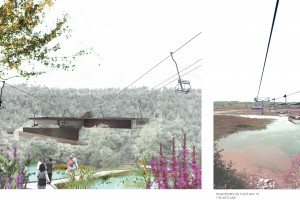
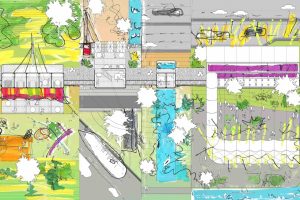
Leave a Reply